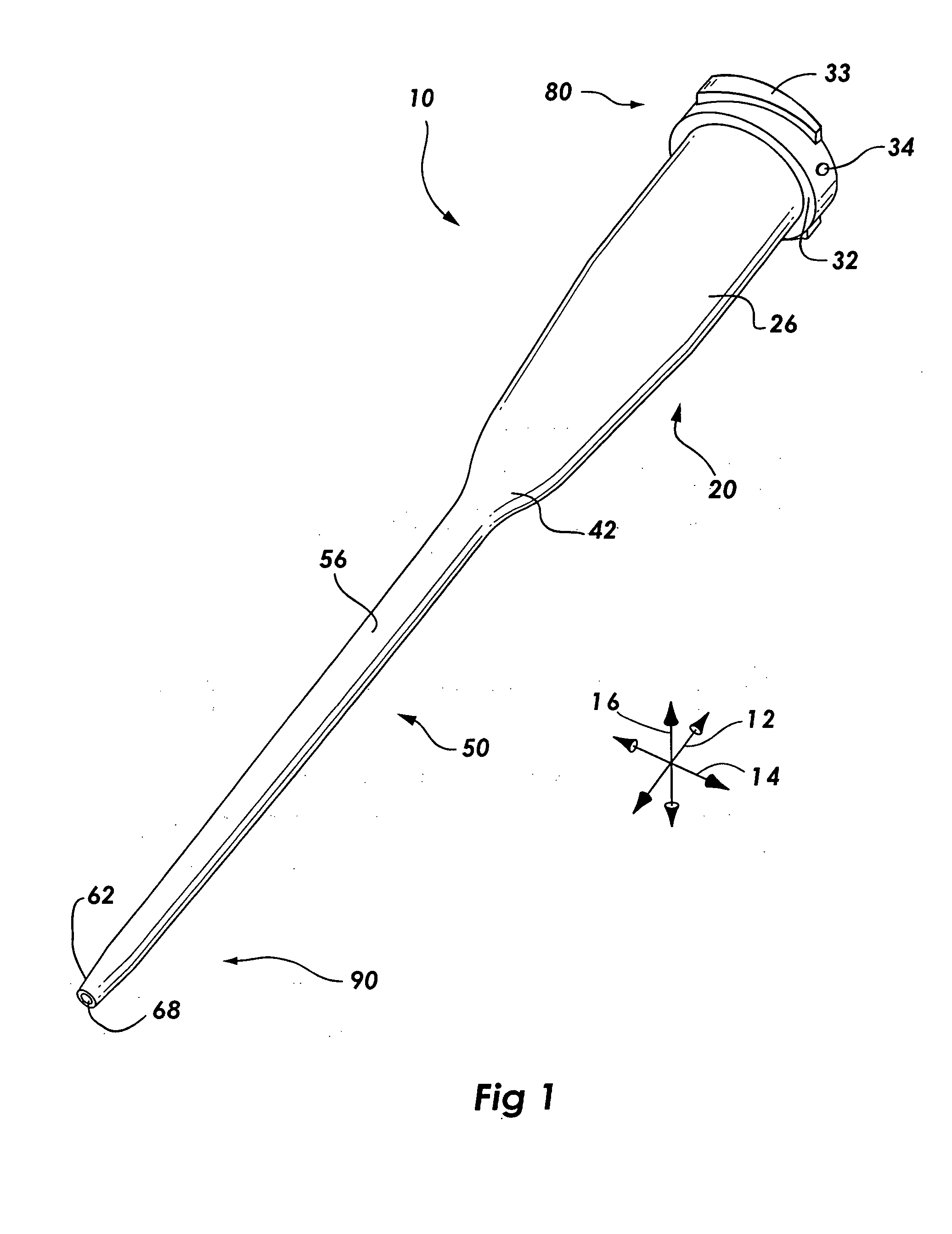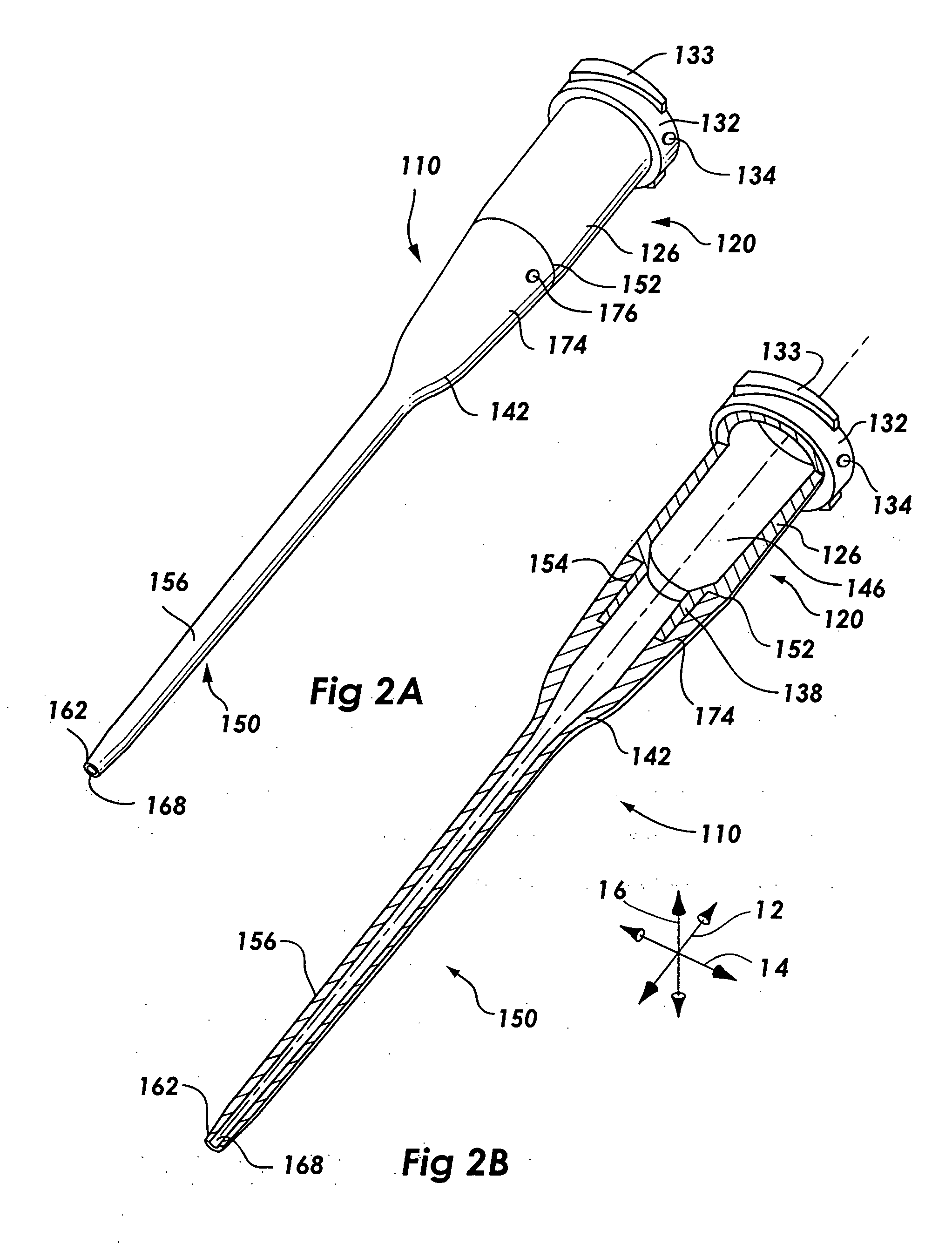Catheter assemblies and injection molding processes and equipment for making the same
a catheter and assembly technology, applied in the field of catheter assemblies, can solve the problems of time or cost savings for manufacturers, long, thin, tubular objects such as catheters have traditionally been very difficult to produce using such injection molding technologies, and difficulty, etc., to achieve rapid and inexpensive manufacturing, accurate tip geometry, and easy and comfortable insertion
- Summary
- Abstract
- Description
- Claims
- Application Information
AI Technical Summary
Benefits of technology
Problems solved by technology
Method used
Image
Examples
Embodiment Construction
The presently preferred embodiments of the present invention will be best understood by reference to the drawings, wherein like parts are designated by like numerals throughout. It will be readily understood that the components of the present invention, as generally described and illustrated in the figures herein, could be arranged and designed in a wide variety of different configurations. Thus, the following more detailed description of the embodiments of the apparatus, system, and method of the present invention, as represented in FIGS. 1 through 16, is not intended to limit the scope of the invention, as claimed, but is merely representative of presently preferred embodiments of the invention.
The present invention includes advances in catheter design, material selection, and mold design which combine to enable production of a catheter assembly, including a catheter hub and a catheter tube, using injection-molding technologies. The invention further provides catheters which ma...
PUM
| Property | Measurement | Unit |
|---|---|---|
| length | aaaaa | aaaaa |
| molecular weight | aaaaa | aaaaa |
| rigid | aaaaa | aaaaa |
Abstract
Description
Claims
Application Information
 Login to View More
Login to View More - R&D
- Intellectual Property
- Life Sciences
- Materials
- Tech Scout
- Unparalleled Data Quality
- Higher Quality Content
- 60% Fewer Hallucinations
Browse by: Latest US Patents, China's latest patents, Technical Efficacy Thesaurus, Application Domain, Technology Topic, Popular Technical Reports.
© 2025 PatSnap. All rights reserved.Legal|Privacy policy|Modern Slavery Act Transparency Statement|Sitemap|About US| Contact US: help@patsnap.com



